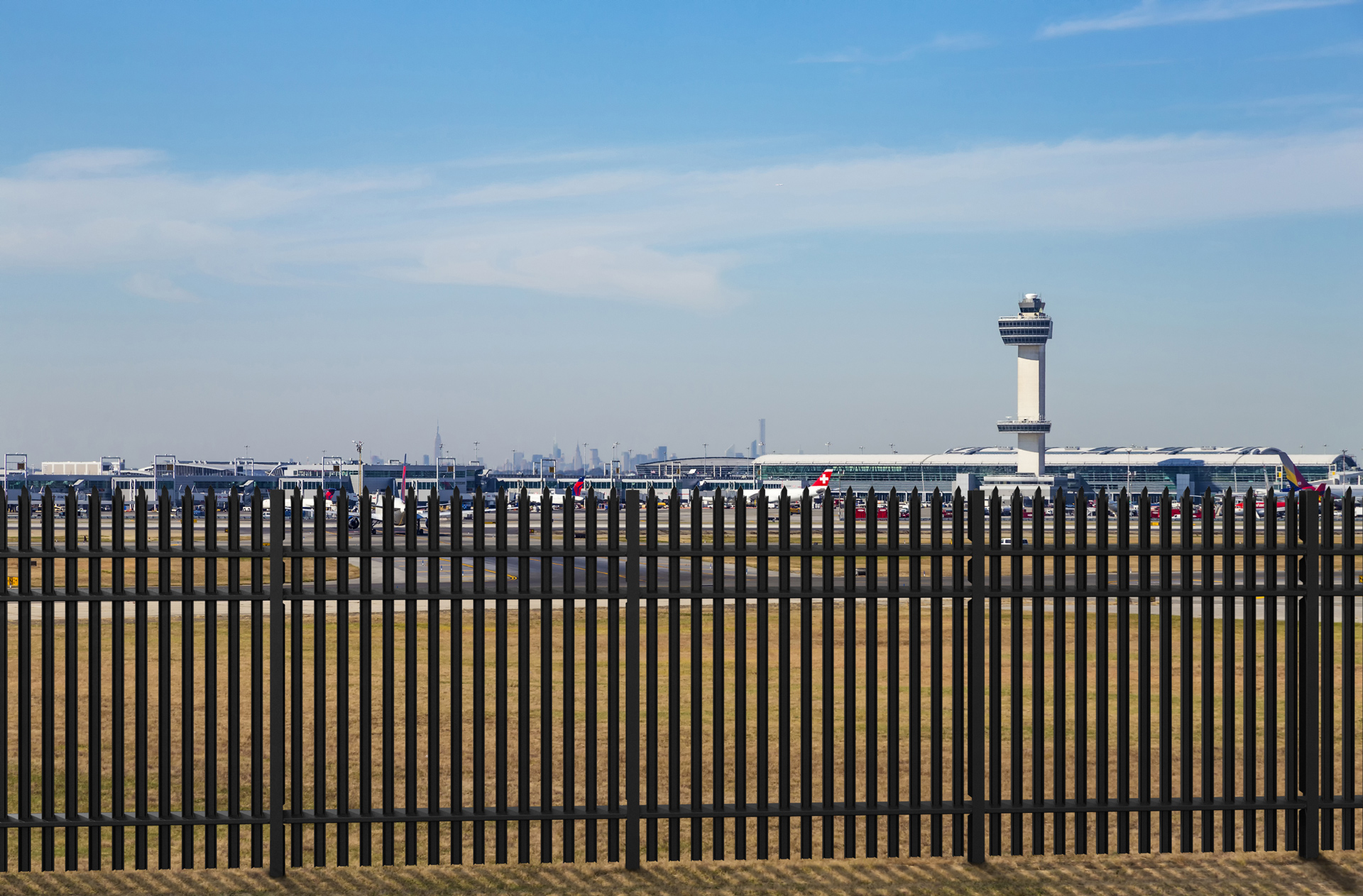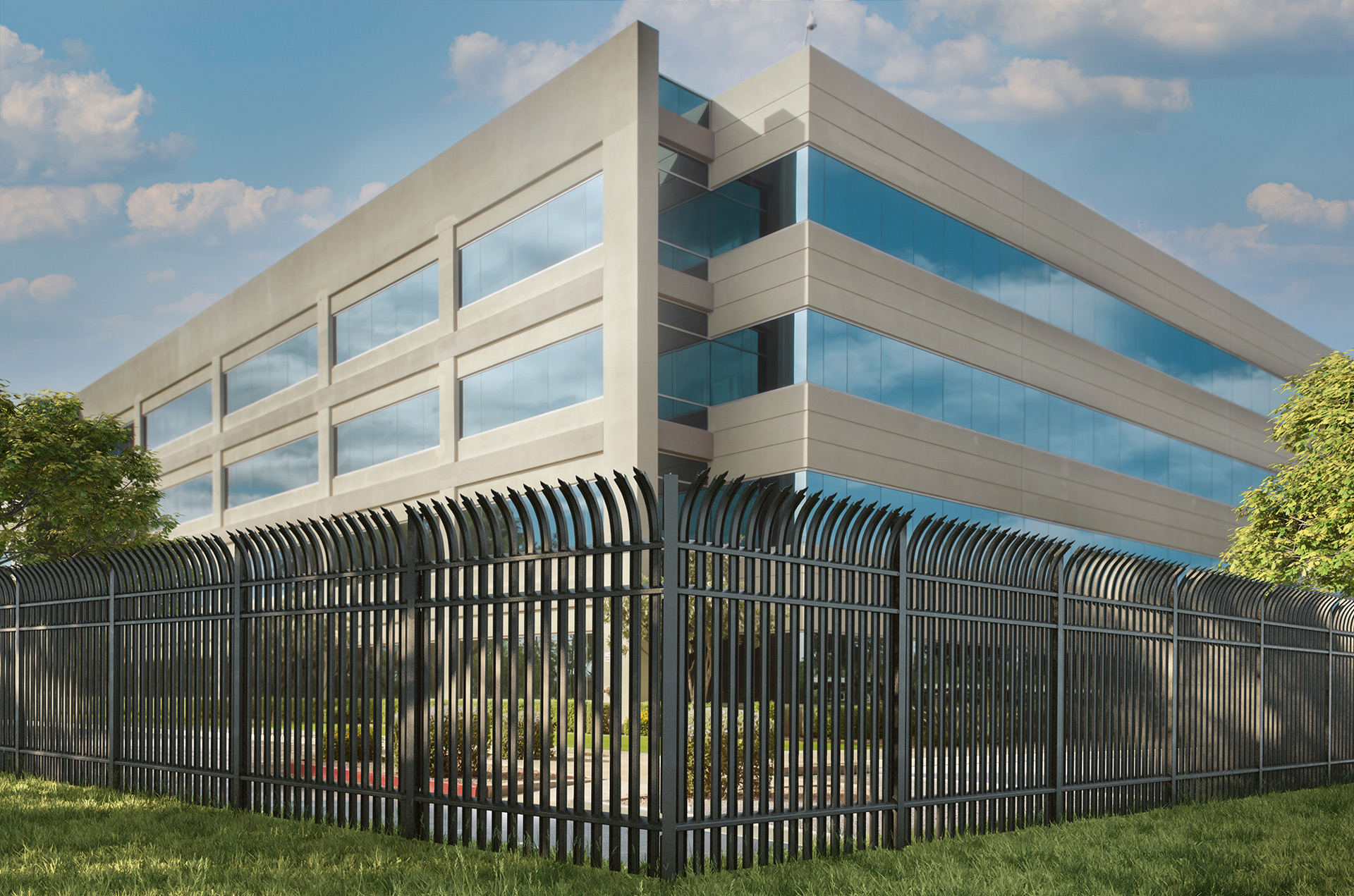╳

Get The Latest On Our Greatest
Subscribe to Our Company/Product Updates

Monday, May 23, 2022
High-security fences have been a staple for protecting detention facilities, data centers, airports and distribution centers. However, in recent years, this type of fence has increasingly become popular for protecting public works like reservoirs, pipelines, dams, sewage treatment centers and much more. While these projects need all the same strength and deterrence capabilities of a standard high-security steel fence, their location often presents additional challenges to take into consideration when choosing the right fencing solution.
For instance, unlike an airport that sits on a relatively flat expanse of land, a dam or reservoir may be surrounded by sloped or uneven ground, which can create sizeable gaps at the bottom of a fence. These gaps are weak spots for intruders to slide under. An aggressive landscape isn’t the only thing to consider. There’s also the difficulty of accessing the site to install the fence and the increased exposure to the elements. With these things in mind, facility managers for public works projects need a fence that can handle the added challenges of these sites. The points below are just a few qualities a high-security fence should have to adequately protect an isolated site.
Choosing an anti-climb fence is of utmost importance for public works projects that are in more isolated areas. High-security steel fences are robust in weight and physical appearance. They also typically have the vertical and horizontal components integrated, which makes it appear more difficult to cut through or remove sections of the fence. While high-security steel fences can withstand brute force, strength alone does not make a fence impenetrable, which is why anti-climbing designs are a must. Further, for remote locations, without frequent traffic or feasible guard routes, an anti-climb security fence may be the only thing standing in the way between essential public services and intruders with mal intent.
But what is an anti-climb fence? Put simply, it’s a fence with features that prevent climbing. These features can range from slick and durable mesh installed over a fence to rolling assemblies that prevent an intruder from gaining handholds. They can also be part of the fence itself. Horizontal rails can be designed to inhibit a foothold to prevent easy climbing. Select high-security, anti-climb fence manufacturers have developed solid i-beam pales that are installed through the rail to deter and deny any would-be climbers. Strong and sophisticated in appearance, anti-climb security fences can also have pales that curve outward, creating a fence top that is difficult to scale.
As implied above, sloped or uneven terrain can create a weak link in a facility’s perimeter defenses. For traditional high-security fences, these changes often create gaps at the bottom of the fence. In these instances, all the investment in an anti-climb security fence would be for naught because an intruder could easily slide underneath.
Rackable design contributes to a fence’s ability to keep a well-defined perimeter by allowing a fence to follow gradation changes without the bottom gap. For example, ARES™ high-security steel fencing from Fortress Building Products can adjust up to 12 inches per panel to sideline any issues posed by aggressive landscapes. As such, it ensures that both the top and bottom will deter any prospective trespasser. Rackable design also supports a visually appealing look by allowing the fences to smoothly roll over hills and valleys.


Additionally, high-security fences used in isolated areas like sewage treatment plants or reservoirs should be quick and easy to install. Not only does this mean fewer days without an anti-climb security fence, but it also means less hours will be needed to get crews out to the site and the fence built, which can translate to a lower bottom line.
Pre-assembled panels also offer product consistency. Facility managers will not need to inspect every single pale to be certain it is up to snuff. Instead, they can rest assured that the whole assembly will meet their security needs.
All fences protect what they surround, but they, too, also need protection. Anti-climb security fencing solutions can withstand the elements for a long service life when they sport both extensive galvanization and a layer of architecture grade powder coating. Both elements resist corrosion from rain and high humidity to ensure fence’s structural integrity for years to come.
In addition, dual protected high-security fencing will resist fading from harsh UV exposure. Because these layers of protection provide premium weather-resistance while also being virtually maintenance-free, they can be ideal for remote or difficult-to-reach locations. Facility managers will not need to think through the logistics of getting equipment, crews and chemicals out to an isolated location. Further, because dual-coated high-security steel fences do not need regular fungicide and insecticide treatments, they can be maintained without risking polluting nearby ecosystems or contaminating reservoirs or dams with harmful chemicals.
For buildings and campuses looking to bolster the protection at their perimeters, there are many options for anti-climb fences. This single quality is more than adequate for easily accessed facilities on relatively flat terrain. But for more remote locations that have uneven and sloped landscapes, anti-climb capabilities should be supplemented with other features.
So why settle for the bare minimum? High-security options from Fortress® fencing create a more robust, longer-lasting first line of defenses against intruders with leading weather-resistance, pre-assembled and rackable panels. These products are an ideal solution for places that cannot be monitored regularly as well as those that can.
How Advances in Modern Technology have Improved Today’s Commercial Fencing
High-Security Fence Systems: What to Consider before Installation
Search